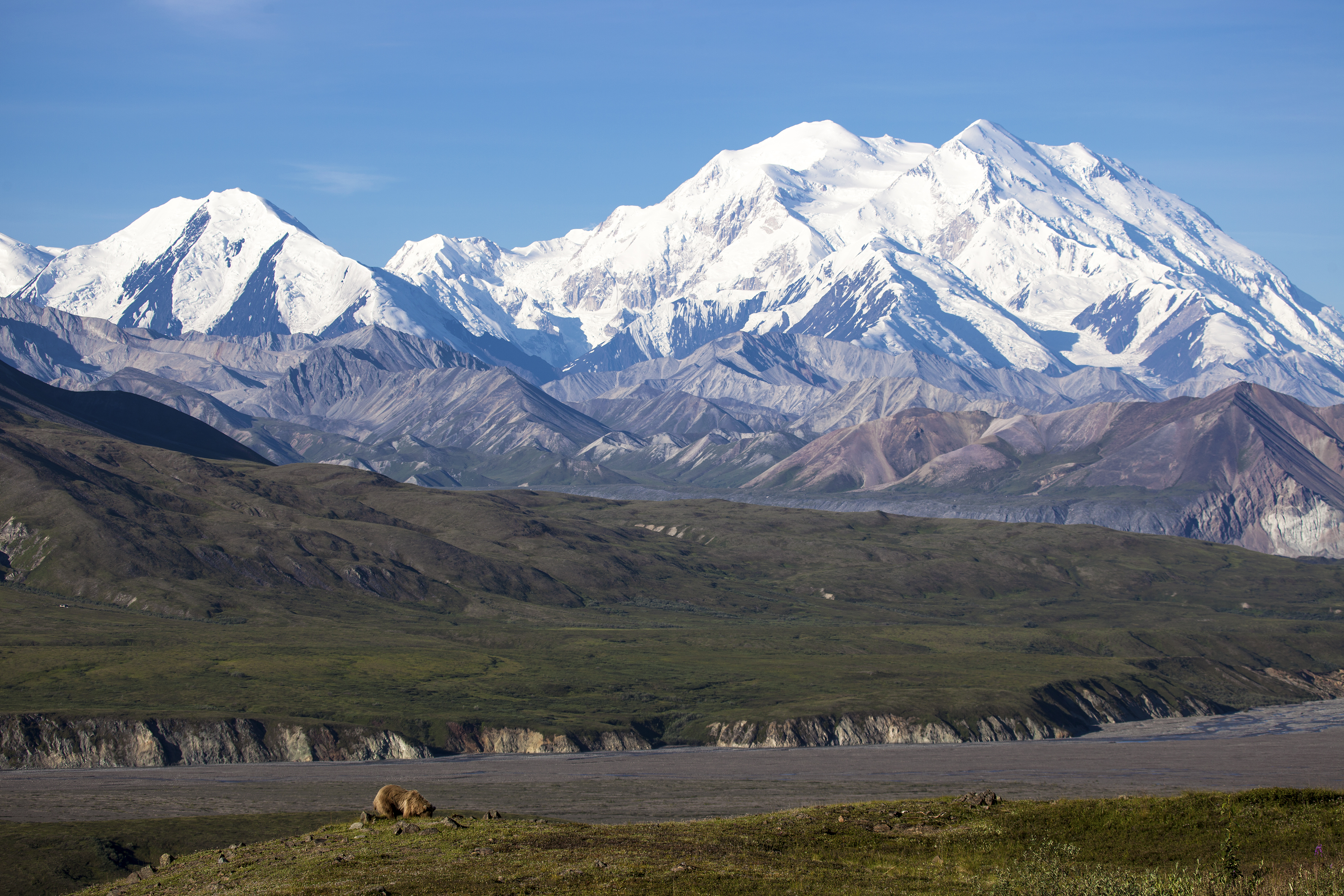Mount McKinley, now officially known as Denali, stands tall as the highest peak in North America, piercing the Alaskan sky at a staggering 20,310 feet. This majestic mountain has long captivated the imaginations of adventurers and nature enthusiasts alike, inspiring awe and respect with its sheer size and formidable presence.
A Bit of History
For centuries, Denali has been revered by the indigenous people of Alaska, the Dena’ina, who called it “Denali,” meaning “The High One.” This name reflects the profound respect and reverence they held for this magnificent mountain.
European explorers first encountered Denali in the late 18th century. Initially, it was named Mount McKinley after William McKinley, the 25th President of the United States. However, in 2015, the mountain’s official name was restored to Denali, acknowledging its historical and cultural significance to the Dena’ina people.
Climbing Denali: A Daunting Challenge
Climbing Denali is considered one of the most challenging mountaineering feats in the world. Its remote location, extreme weather conditions, and treacherous terrain make it a formidable opponent for even the most experienced climbers.

The Weather: Denali is notorious for its unpredictable and often severe weather. High winds, blizzards, and sub-zero temperatures can quickly turn a climb into a life-threatening ordeal.
Despite these challenges, Denali continues to attract climbers from all over the world. Those who successfully summit this magnificent peak experience a sense of accomplishment and exhilaration that is truly unparalleled.
The Beauty of Denali National Park
Denali National Park and Preserve, encompassing over 6 million acres, is a vast wilderness area that offers stunning scenery and diverse wildlife. The park is home to a wide array of animals, including grizzly bears, wolves, caribou, and Dall sheep.
Scenic Drives: The park road offers breathtaking views of the mountain and surrounding landscape. Visitors can enjoy scenic drives, stopping at various viewpoints to capture stunning photographs.
Denali National Park is a truly special place, offering a unique opportunity to experience the grandeur of the Alaskan wilderness.
Protecting Denali: Conservation Efforts
The preservation of Denali is crucial for both its ecological and cultural significance. Conservation efforts focus on protecting the park’s natural resources, minimizing human impact, and ensuring the long-term sustainability of the ecosystem.
Protecting Wildlife: Measures are in place to protect wildlife habitats and minimize human-wildlife interactions.
By working together, park managers, researchers, and the public can ensure that Denali remains a pristine wilderness for generations to come.
Planning Your Trip to Denali
If you’re planning a trip to Denali, there are a few things to keep in mind:
Best Time to Visit: The best time to visit Denali is during the summer months (June to August) when the weather is generally milder and the park road is fully accessible.
Tips for Visiting Denali
Pack for All Weather: Be prepared for unpredictable weather by packing layers of clothing, rain gear, and sturdy footwear.
Denali: A Symbol of Wilderness
Mount McKinley, or Denali, is more than just a mountain; it is a symbol of the raw power and beauty of the Alaskan wilderness. Its grandeur inspires awe and respect, reminding us of the importance of protecting our planet’s natural treasures.
Whether you choose to climb its formidable slopes or simply admire it from afar, Denali offers a unique and unforgettable experience.
Conclusion
Denali stands as a testament to the enduring power of nature, a majestic peak that continues to captivate and challenge us. By respecting this incredible mountain and the surrounding wilderness, we can ensure that its awe-inspiring beauty will be enjoyed by generations to come.


/cdn.vox-cdn.com/uploads/chorus_asset/file/25378171/2139238696.jpg?w=200&resize=200,112&ssl=1)


.jpg?auto=webp&format=pjpg&width=3840&quality=60&w=200&resize=200,112&ssl=1)
